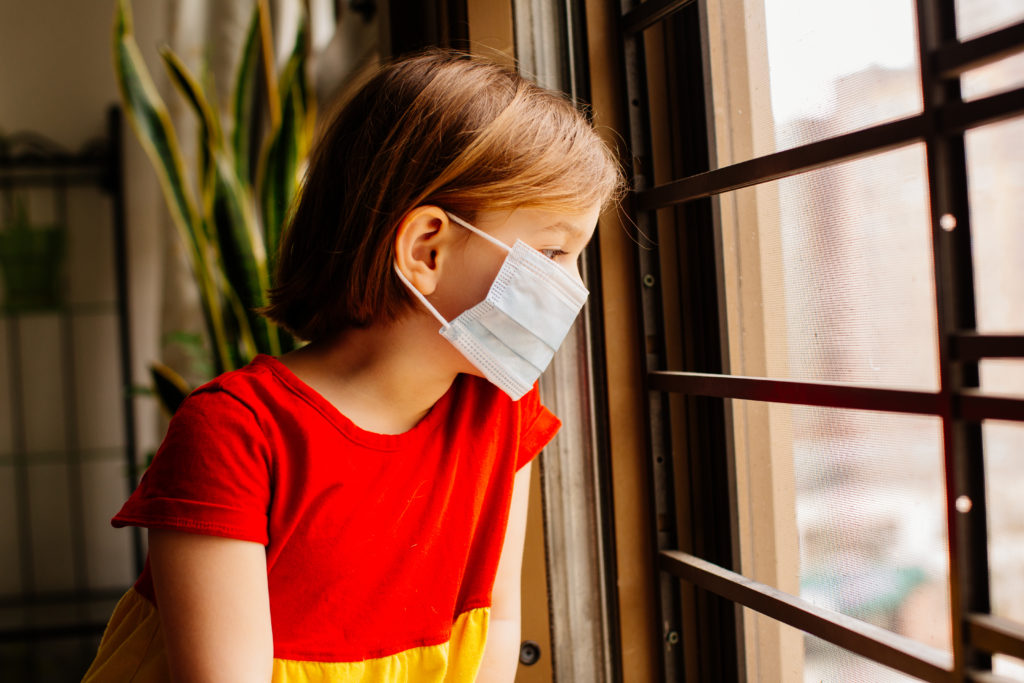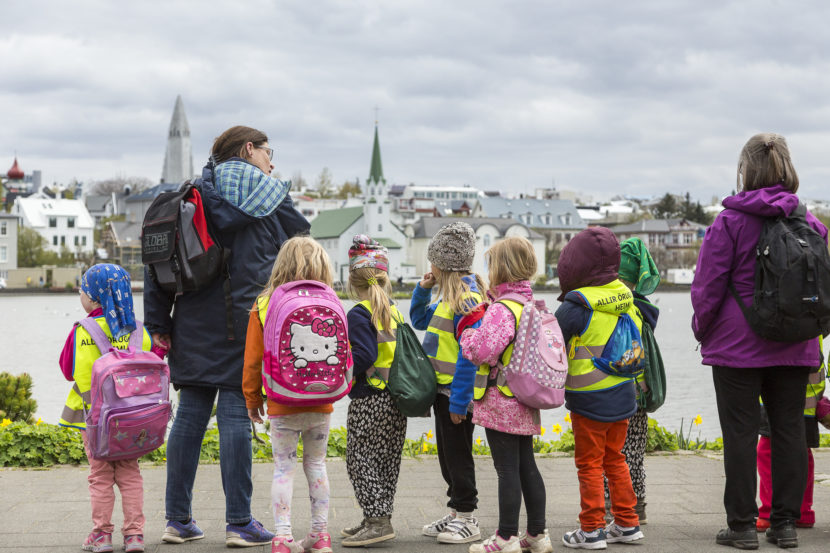There is a large body of literature outlining arguments on why it is rational to invest in children. Many of these arguments are intuitively appealing or based on moralistic arguments, referring to human rights in general and children’s rights in particular.
Other arguments provide summaries of fragmentary evidence on the impact of investments made in children on economic or social outcomes either for the children themselves, for their communities or both (Van Damme et al., 2023). Without any doubt, Icelandic’s legislative initiative named Prosperity Act has proven how investing in children is highly beneficial for children’s future prosperity and well-being.
Who benefits from investments in children?
We all do. The primary beneficiaries are children and their parents. For example, if a low-income parent is able to secure a place for her child in a high quality day care program, that child is likely to benefit from exposure to a wider array of learning opportunities than he or she might have at home. Enrolling the child in day care may also open the door for the parent to take on employment or further her education in order to improve her career prospects. (Karoly, 2015).
The studied literature suggests that the returns on investments within child-relevant sectors are not only experienced by the direct recipients but by the wider society in the form of socioeconomic returns. Public investments in child-relevant sectors lead to human development outcomes in the form of improved health and education (human capital).
These outcomes provide a national workforce that is more productive and innovative, leading to an increase in (labour) productivity and increases in employment and economic growth. This is evidenced across a breadth of international evidence include for nutrition, health, education, child protection and social protection (Van Damme et al., 2023).
Investments in reducing poverty and improving social protection
Social protection has the potential to address social and economic vulnerabilities but also to contribute to other development challenges. These include, among others, economic growth, national poverty reduction and human capital development. International evidence confirms that social protection has been an income multiplier and consequently promotes local economic growth as well as supporting community cohesion, promoting investments and boosting productivity (Van Damme et al., 2023).
For instance, a cross-country study comparing Bangladesh, Colombia, Costa Rica, Georgia, Ghana, India, Rwanda and Serbia found that a 1 percent GDP investment in social protection had a multiplier effect on GDP of 0.7 to 1.9. Social protection investments in countries with a lower GDP per capita (Bangladesh, India and Rwanda) were found to have the highest multiplier effect on GDP.
In the same study, a 1 percent GDP investment in social protection led to a limited multiplier of 0.1 to 1.1, due to the increase in human capital accumulation and resulting productivity of the country’s workforce. This employment multiplier was greatest for women, demonstrating the role of social protection in reducing gender inequalities in employment (Van Damme et al., 2023).
In this context, maternal and child health and nutrition (MCHN) investments are also important, as childhood malnutrition, including maternal undernutrition, is closely linked to morbidity, mortality and it is the leading cause of poor health globally (Van Damme et al., 2023).
Investments in education
The relationship between education and economic growth has been extensively studied empirically since the 1960s. In general, nearly all surveyed studies found a strong positive association between economic growth and average number of years of education. More recent studies found returns in terms of GDP per capita of around or at least 10 percent for each additional year of schooling, with findings suggesting that high economic returns to initial investments in education hold true in cross-country contexts and across time.
The COVID-19 pandemic allowed for observations on the effects of not attending school during school closures and, in some countries, cutting the education budget. As a result of school closures, a recent study estimated US$121.54 billion will be lost globally in wages by 2030 because of learning losses (Cohen et al., 2022). Data from the G20 countries also showed that a 4-month school closure could cause an average decrease of 1.5 percent of GDP.

This is in line with the previous study which estimated a global GDP decline of 1.11 percent in 2030, due to the learning losses from school closures in the past two years. The real consequence is however hard to estimate because of the long-lasting consequences of the pandemic, even after schools reopen, and the wide range of mediating factors which will influence future estimates (Van Damme et al., 2023).
Investments in child protection
Child protection encompasses many areas such as child marriage, child/teenage pregnancy, child violence, and child labour, among others. As regards child marriage, the relationship between the prevention of it and economic return is not straightforward. Addressing child marriages affects socio-demographic indicators, such as early pregnancy and childbirth, school attendance and completion, which can in turn affect economic indicators at both the private and public levels.
For instance, marriage is a key driver behind school dropouts, especially among girls. Once married, a child is less likely to re-enrol or complete their education. Some studies provide evidence suggesting that each additional year of secondary school reduces the chance of child marriage by 6 percentage points on average (Van Damme et al., 2023).
Global welfare benefits from reduced child pregnancies have been estimated to be worth US$566 billion by 2030. This has also been observed in a study conducted in Uganda, where the World Bank calculated that reducing early pregnancies will provide US$2.4 billion in annual benefits by 2030 through reduced early childbearing and improved educational achievements (Van Damme et al., 2023).
Finally, the relationship between failing to prevent violence against children and economic losses is mostly indirect. The direct effects are psychological as well as physical and translate into losses in learning or severe (mental) health issues which lead to increased morbidity, reduced productivity, and economic losses.
The Icelandic “Prosperity Act” – a milestone for investments in children
Iceland is one of the most advanced European countries in promoting investments in children. In fact, it has recently adopted the Prosperity Act which is the heart of comprehensive changes implemented by the Icelandic government in the last years to further the rights of the child and increase the prosperity of children in Iceland.
According to the Act, all service providers are obliged to collaborate in a more integrated way than before, with the principal aim of ensuring that children requiring integrated services, along with their caregivers, get appropriate and unhindered access to the support they need (CoE, 2023).
The Prosperity Act calls for a substantial increase in the government’s investment in services for children and families and to provide an evidence base for the investment a comprehensive monetary and economic evaluation was conducted. The results generated a paradigm shift within the Government of Iceland, a shift from looking at expenditure concerning children’s wellbeing and prosperity as a cost to looking at it as an investment (CoE, 2023).
In particular, the Icelandic government decided to reform the services in the interest of children’s prosperity and to divide them into three stages: primary, secondary and tertiary level services. Primary level services include basic services and early assistance for all children and families, secondary level services include more targeted assistance and resources whereas tertiary level services include specialized assistance resources to safeguard instances where a child’s prosperity is, or could be, endangered (BVS, 2023).
Following this paradigm shift, the Government of Iceland has made a strong emphasis on conducting further economic evaluation simultaneously as it has developed key indicators for child wellbeing through a dashboard published annually (CoE, 2023). It consists of five dimensions that are based on the general principles of the United Nations Convention on the Rights of the Child: education, equality, equity, health and wellbeing, security and protection and social participation. The dashboard provides information that can be used in the prioritization of projects and funding as well as in policy development, by government and municipalities (BVS, 2023).
“The Icelandic Minister of Education and Children has made convincing work to show how investing in child protection and violence prevention generates a large, long-term prevention dividend. When we put public funding into building roads and bridges it’s addressed as an investment, when we put public funding into supporting children it is perceived as a cost using taxpayers’ money. Most likely the return for society – the dividend – is higher on children than bridges”.
– Morten Kjærum, Head of the Raoul Wallenberg Institute of Human Rights and Humanitarian Law (Raoul Wallenberg Institute, 2023)
The Prosperity Act requires different organisations to work together to make sure that children and their caregivers can easily get the help and support they need in order to improve the lives of children in the country. The government’s commitment to adopting the international standards that protect children’s rights has also been integrated by funding and measures to put it into practice.
In fact, the government invested more in services for children and families and found that it was a good investment, as it would provide a 9.6% return, which is more than what the government would get from other large projects (CoE, 2023).
Following Iceland’s footsteps for the betterment of children’s rights worldwide
Iceland has proven that a paradigm shift in investing in children is not only possible but also convenient for everybody: children can have access to better and more services and opportunities, parents can be more supported, the private and public institutions can benefit from networking and collaborating and the society as a whole can benefit from more competences, resources and skill to be employed for everybody’s interest, in the present and in the future.
Iceland took five years before adopting the Prosperity Act, as the government made the choice to listen to all the parties of the society involved: children and parents, public and private sector, third sector, services, organizations, etc. Other governments should adopt a similar long-term approach when designing their policies which could bring together all political parties to achieve a common goal and the entire society should be involved in the process.

We at Humanium strongly believe in the power of sharing best practices and experiences of success related to children’s rights. In this sense, sharing Iceland’s commitment to investing in children and raising awareness of its benefits is part of our mission in order to call other governments, public and private institutions to play their role in adopting and implementing new forms of legislation that provide more investments in children as well as we call citizens to join us in advocating for a which is more child-friendly. Join Humanium by sponsoring a child, making a donation, or becoming a member or a volunteer!
Written by Arianna Braga
References:
BVS (2023). Integration of Services in the Interest of Children‘s Prosperity. Retrieved from BVS at https://www.bvs.is/media/almenningur/samthaetting_tjonustu_handout_ens_v4.pdf, accessed on 29 April 2023.
CoE (2023). Reykjavik conference: Investing in children – the key to prosperity. Retrieved from CoE at https://www.coe.int/en/web/portal/-/reykjavik-conference-investing-in-children-the-key-to-prosperity, accessed on 29 April 2023.
Cohen S., Chakravarthy S., Bharathi S., Narayanan B., Park C. (2022). Potential Economic Impact of COVID-19-Related School Closures. Asian Development Bank. Retrieved from the Asian Development Bank at https://www.adb.org/publications/economic-impact-covid-19-related-school-closures, accessed on 29 April 2023.
Mueller, H. (2013). The Economic Cost of Conflict (IGC Report). Retrieved from the International Growth Centre at https://www.theigc.org/sites/default/files/2014/09/Mueller-2013-Working-Paper2.pdf, accessed on 29 April 2023.
Raoul Wallenberg Institute (2023). Moving Forward in the Struggle to Fight Violence Against Children. Retrieved from Raoul Wallenberg Institute at https://rwi.lu.se/news/moving-forward-in-the-struggle-to-fight-violence-against-children/, accessed on 1 May 2023.
Van Damme C., Llewellin P., De Neubourg C., Karpati J. (2023). Economic Case for Investing in Children – Literature Review and Analysis. Retrieved from Save the Children UK at https://resourcecentre.savethechildren.net/pdf/Economic-Case-for-Investing-in-Children-Literature-Review-and-Analysis.pdf/, accessed on 29 April 2023.


